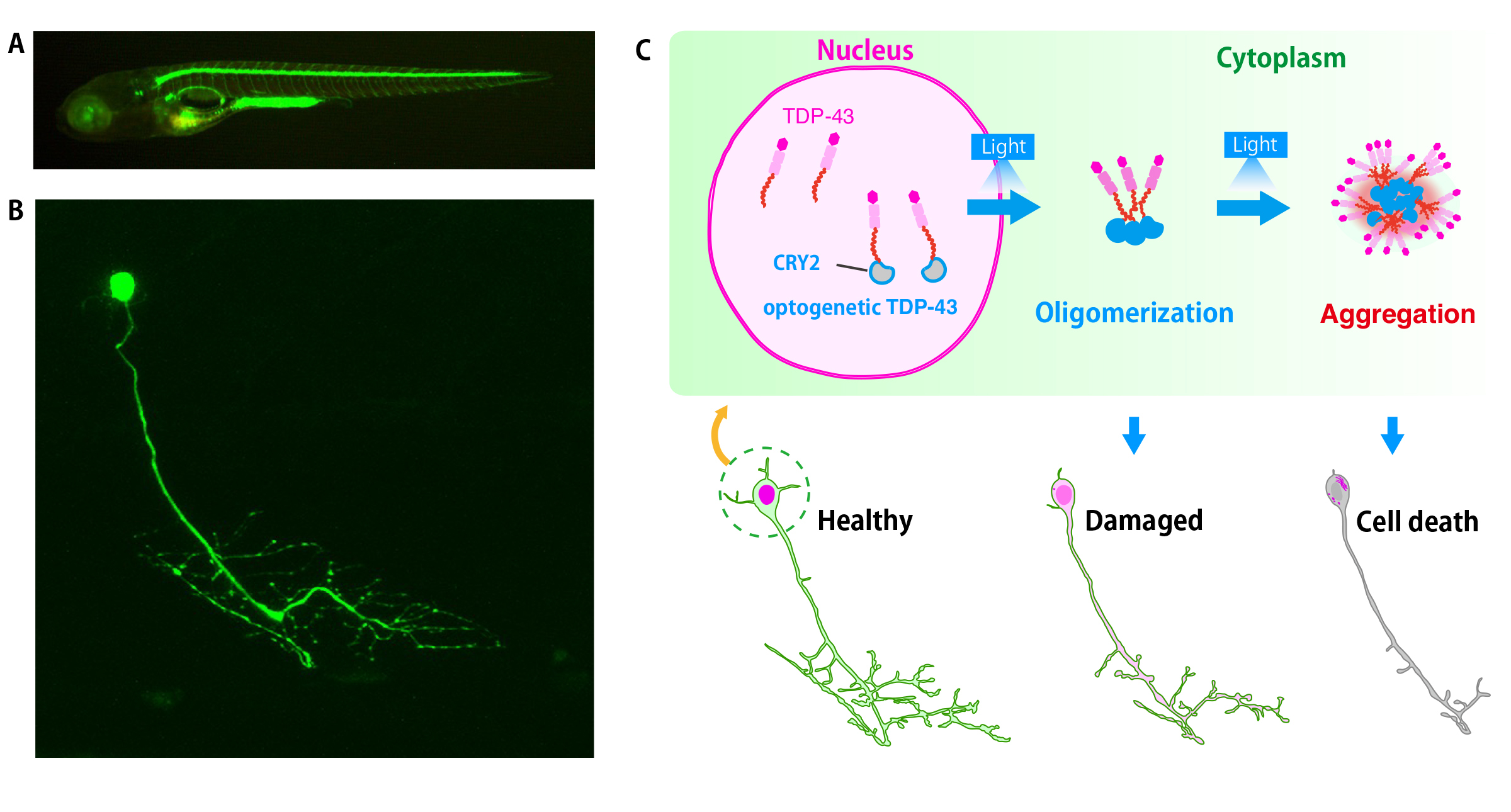Asakawa Group • Neurobiology and Pathology Laboratory
Understanding the molecular and cellular basis of ALS
Faculty
Research Summary
The main objective of our laboratory is to understand the molecular and cellular basis of the motor system and the pathology of amyotrophic lateral sclerosis (ALS), an incurable motor neuron disease. Using zebrafish as a primary model, we study the motor system at the behavioral, circuit, cellular, and molecular levels, with a primary focus on synapse formation, phase separation, RNA metabolism, energy homeostasis, DNA damage, and ploidy. The ultimate goal is to identify the root causes of ALS and develop therapeutic strategies through comprehensive and multidimensional basic research.

Selected Publications
Asakawa K, Handa H, Kawakami K. Optogenetic modulation of TDP-43 oligomerization accelerates ALS-related pathologies in the spinal motor neurons. Nat Commun. 2020 Feb 21;11(1):1004.
Asakawa K, Kawakami K. Protocadherin-Mediated Cell Repulsion Controls the Central Topography and Efferent Projections of the Abducens Nucleus. Cell Rep. 2018 Aug 7;24(6):1562-1572.
Asakawa K, Handa H, Kawakami K. Illuminating ALS Motor Neurons With Optogenetics in Zebrafish. Front Cell Dev Biol. 2021 Mar 18;9:640414.
Asakawa K, Handa H, Kawakami K. Multi-phaseted problems of TDP-43 in selective neuronal vulnerability in ALS. Cell Mol Life Sci. 2021 May;78(10):4453-4465.
















